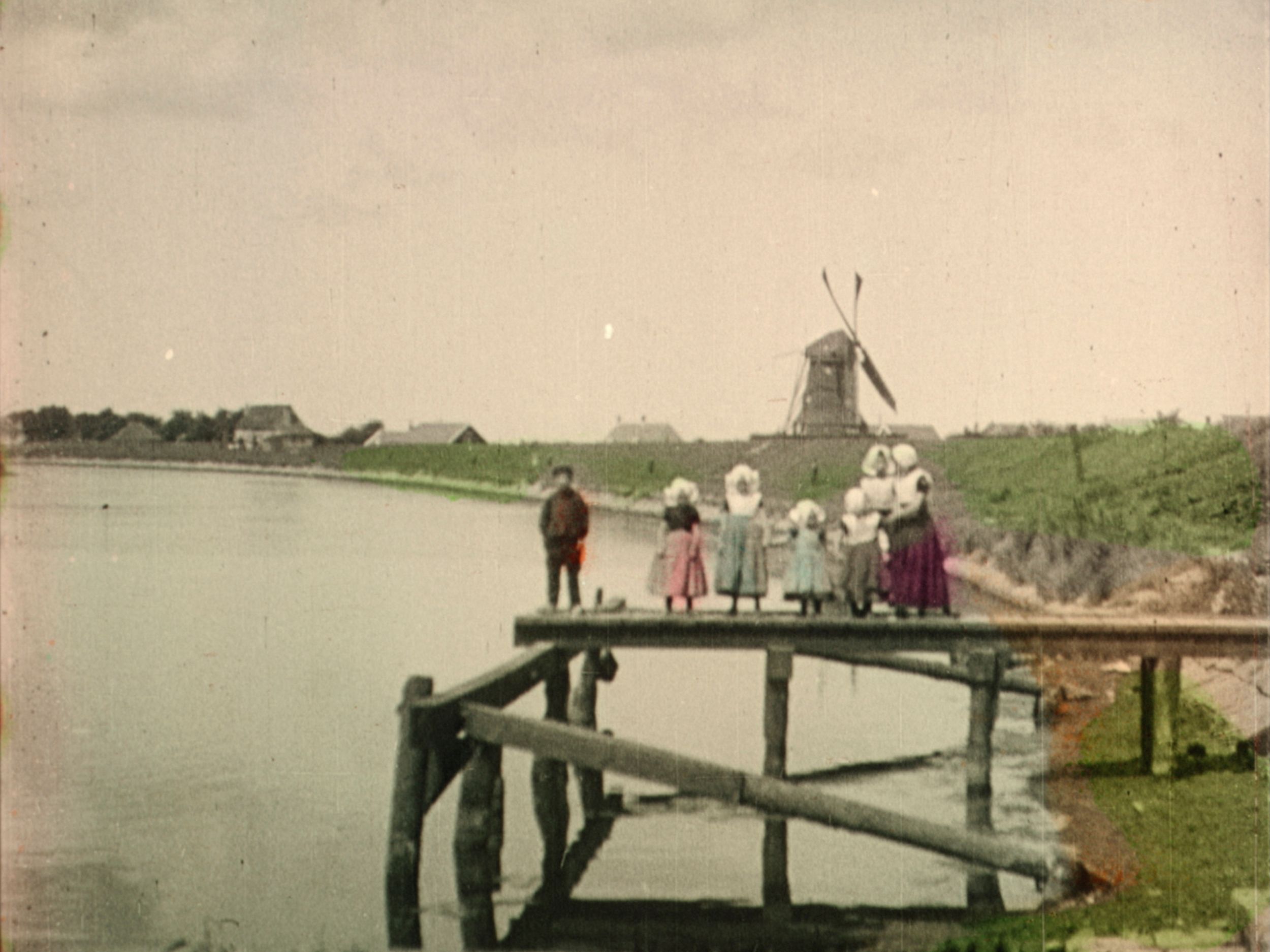
Dearest Fiona
In one of the first scenes, a girl wearing a traditional Dutch bonnet inspects us with curiosity. She was filmed more than a hundred years ago, but it’s as if she’s standing right in front of us. Fiona Tan discovered the footage in the collection of Amsterdam’s Eye Film Museum, where she also found other old documentary material filmed in the Netherlands between 1900 and 1930, some of it hand-colored.
In Dearest Fiona, Tan edits the images together to form a panorama of village and city life, fishing, agriculture and industrialization. Playful moments are juxtaposed with scenes of heavy manual labor, harvesting time and floods. The human subjects in particular bring a sense of intimacy to the stream of images, which is accompanied by a subtle soundscape. Meanwhile, we hear a voice reading from rediscovered letters sent to her from Australia by her Indonesian-Chinese father in the 1980s, when she was studying in the Netherlands. He switches effortlessly from family news to his thoughts about world affairs and colonialism.
The unorthodox combination of these letters and the old footage of the Netherlands makes for an intriguing experience that while intimate and personal, also encompasses a broader vision. Tan invites us to reflect on time and history, our place in the world, and who we are.
Videos
Images


